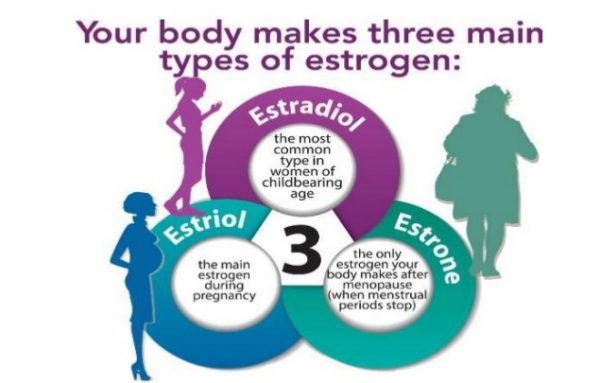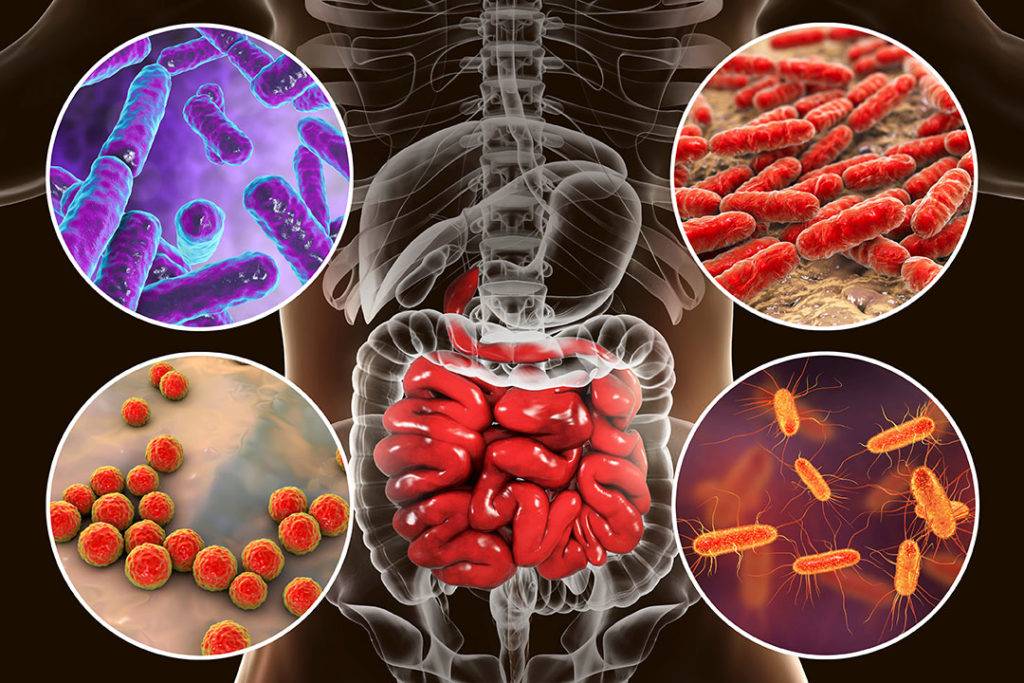

Think high estrogen is only a women’s issue? Think again.
Elevated estrogen levels can cause significant health problems in both men and women—from mood swings and weight gain to infertility and even increased cancer risk. Whether you’re struggling with irregular periods, low libido, breast tenderness, prostate issues, or stubborn fat, estrogen imbalance may be to blame.
Estrogen isn’t a single hormone—it’s a family of three:
E1 (Estrone): Dominant after menopause
E2 (Estradiol): Strongest estrogen; prevalent during reproductive years
E3 (Estriol): Weakest, most protective form; increases in pregnancy or with adrenal DHEA conversion
In men, estrogen plays a role in libido, cardiovascular health, and mood—but too much can lead to fat gain, low testosterone, and prostate problems.
In women, excess estrogen (especially estradiol) can cause PMS, fibroids, breast tenderness, mood swings, and even estrogen-driven cancers.

Many plastics release xenoestrogens—synthetic chemicals that mimic estrogen in the body. BPA and phthalates are common offenders, especially when plastic is heated (e.g., microwaving or hot water bottles).
Common Symptoms:
Weight gain
Low libido
Breast tissue growth (men)
Fatigue and mood swings
Solutions:
Avoid heating food in plastic
Use glass or stainless steel containers and water bottles
Choose BPA-free (and ideally, plastic-free) packaging

Chemicals used in conventional farming—like organochlorines and glyphosate—can mimic or disrupt natural estrogen. These endocrine disruptors also stress the liver, blocking detoxification.
Solutions:
Eat organic produce and pasture-raised meats
Wash produce thoroughly with natural produce wash
Support liver detox with foods like broccoli, garlic, and leafy greens

Soy products contain phytoestrogens, plant compounds that weakly mimic estrogen. In large amounts (tofu, soy milk, fake meats), they can drive up estradiol levels, especially in vegans and vegetarians.
Case example:
A vegan patient consuming soy daily had estrogen levels three times the norm. Once removed, her hormones rebalanced within months.
Solutions:
Limit processed soy and meat alternatives (e.g., Beyond Burger)
Choose clean animal proteins: grass-fed beef, wild-caught fish, eggs
Opt for hormone-free, pasture-raised meat and dairy

High blood sugar = high insulin = high estrogen.
Insulin activates aromatase, the enzyme that converts testosterone into estrogen. This is a major driver of estrogen dominance in men and hormonal imbalance in women.
In Men:
Lower testosterone
More belly fat and “man boobs”
Mood issues and low energy
In Women:
Acne
Hair growth on the face/body
Weight gain
Irregular periods
Solutions:
Cut back on refined carbs and sugar
Eat low-glycemic, balanced meals (protein, fat, fiber)
Test fasting insulin, A1C, and glucose markers

Your gut bacteria play a vital role in hormone detoxification. When gut flora is imbalanced (SIBO, Candida, dysbiosis), certain bacteria release beta-glucuronidase—an enzyme that unbinds estrogen meant for excretion, sending it back into circulation.
Red Flags:
Bloating and gas
Constipation
Brain fog
Estrogen symptoms (PMS, breast tenderness, mood swings)
Solutions:
Use probiotics and digestive enzymes
Treat gut infections with herbal antimicrobials (after stool testing)
Support bile flow and liver detox pathways with bitters, fiber, and magnesium

In functional medicine, we always test — we don’t guess.
If you suspect high estrogen levels, here’s how we assess and personalize your plan:
DUTCH Hormone Panel:
This advanced urine test examines estrogen, progesterone, testosterone, DHEA, and cortisol patterns — and how your body processes hormones.
Comprehensive Stool Testing:
Check for gut infections (H. pylori, Candida, parasites) contributing to poor hormone detox.
Insulin and Blood Sugar Testing:
Evaluate how well your body manages carbohydrates and insulin sensitivity.
Liver Detox Markers:
Measures how efficiently your body can neutralize and eliminate estrogens and toxins.
👉 Interested in testing your hormones the right way? Schedule your FREE consult with Dr. J here.
Once we understand your unique biochemistry, we can create a customized action plan — using diet, lifestyle, targeted supplementation, and detox support.
After identifying the source of the problem, here are common strategies we use:
Switch to organic foods.
Remove plastic exposure.
Reduce processed soy and fake meats.
Balance blood sugar with nutrient-dense, low-glycemic meals.
Sulfur amino acids like cysteine, glycine, and glutamine help build glutathione — your master detoxifier.
B vitamins (B6, B12, folate) help with methylation, a critical detox pathway for estrogen.
Vitamin C and magnesium further support detoxification.
DIM (Diindolylmethane): Helps metabolize estrogens into safer forms.
Calcium-D-Glucarate: Supports liver detox and reduces beta-glucuronidase activity.
Activated Charcoal or Bentonite Clay: Binds and removes toxins from the gut.
Probiotics and Antimicrobials: Restore gut flora balance.
The best plan always depends on your needs, so testing is key.
Estrogen imbalance is not something to ignore. It can silently sabotage your health over time—especially if left undiagnosed. The good news? You don’t have to guess your way through it.
✔️ Test with functional labs
✔️ Treat the root cause
✔️ Transform your hormones naturally
You deserve vibrant health. Let’s work together to make it happen!
Xenoestrogens in Plastics (BPA, Phthalates)
Endocrine disruptors and human health
https://pubmed.ncbi.nlm.nih.gov/23322879
→ BPA and phthalates from plastics can mimic estrogen and disrupt hormonal balance.
Pesticides and Estrogen Disruption
Organochlorine pesticides and estrogen-like effects
https://pubmed.ncbi.nlm.nih.gov/21266177
→ Exposure to pesticides is linked to endocrine disruption and elevated estrogen.
Phytoestrogens from Soy
Soy isoflavones and estrogenic activity
https://pubmed.ncbi.nlm.nih.gov/24392697
→ Soy-derived phytoestrogens can mimic estrogen and affect hormone-sensitive tissues.
High Insulin and Aromatase Activity
Hyperinsulinemia and increased aromatase expression
https://pubmed.ncbi.nlm.nih.gov/11874458
→ Insulin resistance increases aromatase activity, converting testosterone to estrogen.
Gut Dysbiosis and Estrogen Reabsorption
Gut microbiota and estrogen metabolism via beta-glucuronidase
https://pubmed.ncbi.nlm.nih.gov/29372269
→ Dysbiosis increases beta-glucuronidase, which reactivates and recirculates estrogens.
DUTCH Hormone Testing in Functional Medicine
Advanced urine hormone testing for functional assessment
https://pubmed.ncbi.nlm.nih.gov/30844883
→ DUTCH tests are validated for comprehensive assessment of hormone metabolism.
DIM and Estrogen Metabolism
Diindolylmethane modulates estrogen metabolism favorably
https://pubmed.ncbi.nlm.nih.gov/12235639
→ DIM helps shift estrogen toward less harmful metabolites.
Calcium-D-Glucarate and Detoxification
Calcium-D-glucarate enhances estrogen clearance
https://pubmed.ncbi.nlm.nih.gov/16397923
→ Inhibits beta-glucuronidase, supporting estrogen elimination through liver and gut.
Estrogen’s Role in Men’s Health
Estrogen in men: impact on sexual function and fat mass
https://pubmed.ncbi.nlm.nih.gov/25797127
→ Elevated estrogen in men leads to sexual dysfunction, weight gain, and mood issues.
Estrogen Dominance in Women
Clinical and biochemical features of estrogen dominance
https://pubmed.ncbi.nlm.nih.gov/22241582
→ High estradiol with low progesterone causes many female hormonal symptoms.
====================
Recommended Products
IN CASE YOU MISSED IT:
High Potency Purified Silver: A Natural Ally for Immune Health